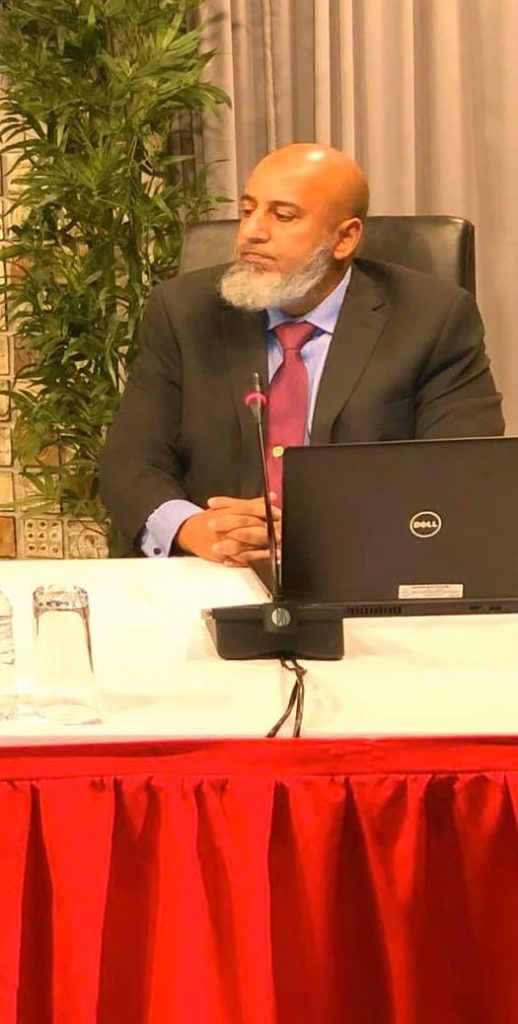At least 80% must social distance

DOCTOR Saed Rahaman, director of veterinary public health said at least 80 per cent of the population needs to be involved in physical distancing for the measure to have any impact on the number of cases.
Speaking at the Ministry of Health virtual press conference on Saturday, he said that in businesses, physical distancing could be done in several ways, including spacial, temporal, and group distancing.
Spacial distancing involves staying six feet apart, while temporal related to time, for example, employees having lunch at different times. Group spacing involved people staying in assigned groups and not allowing the groups to mix. In this way, if someone in a group contracted the virus, only the group would have to be quarantined, rather than all the staff.
He reiterated the guidelines including frequent and adequate hand washing, surface and facility sanitation, respiratory hygiene, proper and constant use of face masks even around co-workers and extended family members, and, for businesses, procedures to deal with sick employees.
Rahaman said recent research from the US said there were five top areas for spreading the virus. They were beaches, gyms, family social gatherings, bars and restaurants. He said the financial and banking sectors were rated as excellent and large supermarkets as good with respect to compliance with covid19 health guidelines.
But, he said, “Despite having the necessary equipment for hand washing and signage for wearing of masks, many institutions were now not implementing these measures as recommended in the guidelines.”
He said the largest strategic weapon against covid19 was behavioural changes, and the positive results from those changes could be sabotaged by a few people who refuse to obey the guidelines. He also had several recommendations for businesses.
Cleaning measures should be documented, and small and medium businesses should have a contracted agency for deep sanitation in the event of a covid19 case on the premises.
People should identify critical groups of employees and have someone train with them so the new person could take over if the skilled person got sick.
“Establish clear protocols for regular and emergency communication both with your employees and your stakeholders and evaluate what the government is doing to support your business. There may be grants available, tax concessions – whatever is available, take great use of these so your business could stay aflsoat.”
He also suggested companies solidify and streamline work-from-home arrangements, and make contingency plans to compartmentalise operations so the business could continue if an office needed to be shut down.


Comments
"At least 80% must social distance"